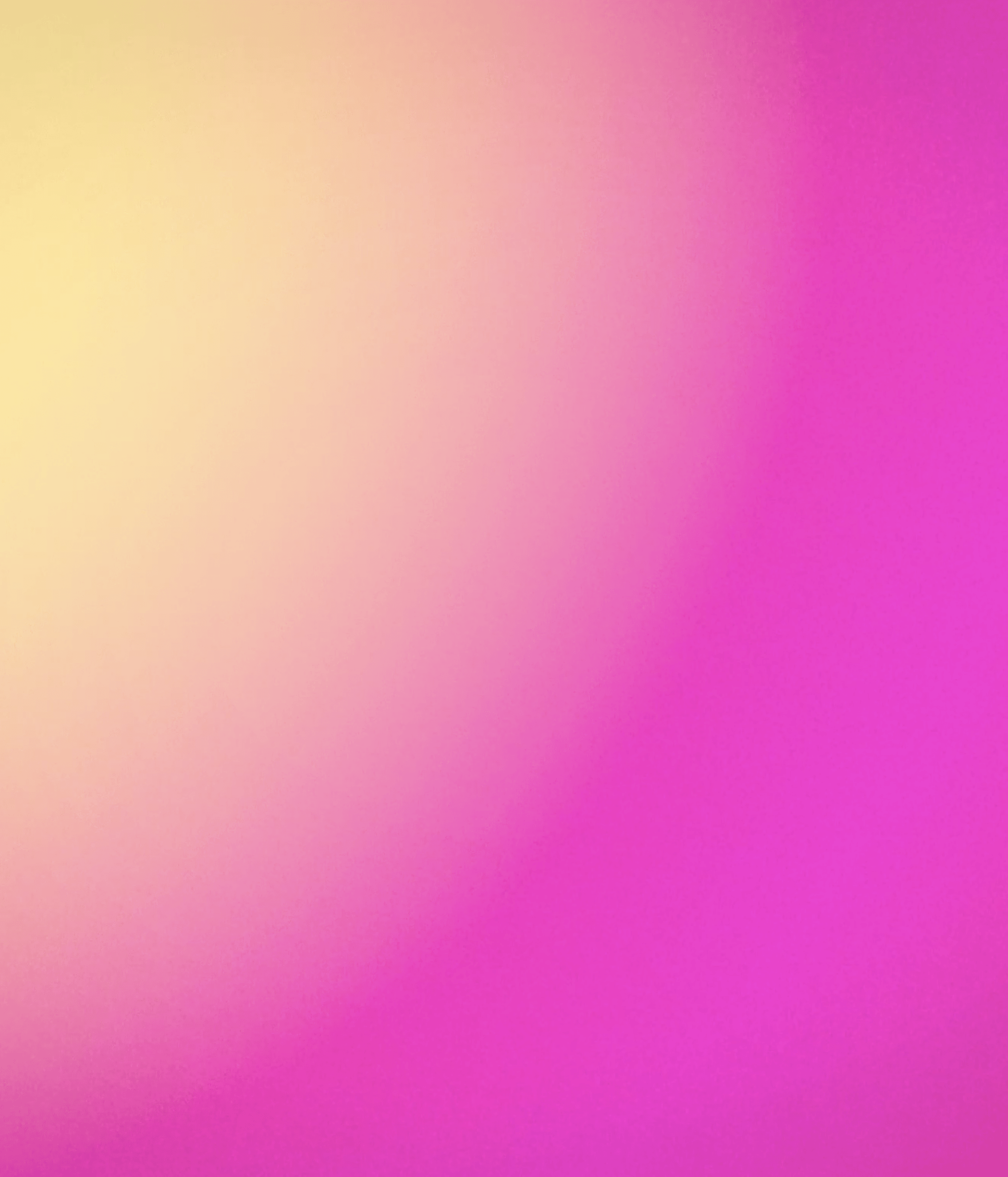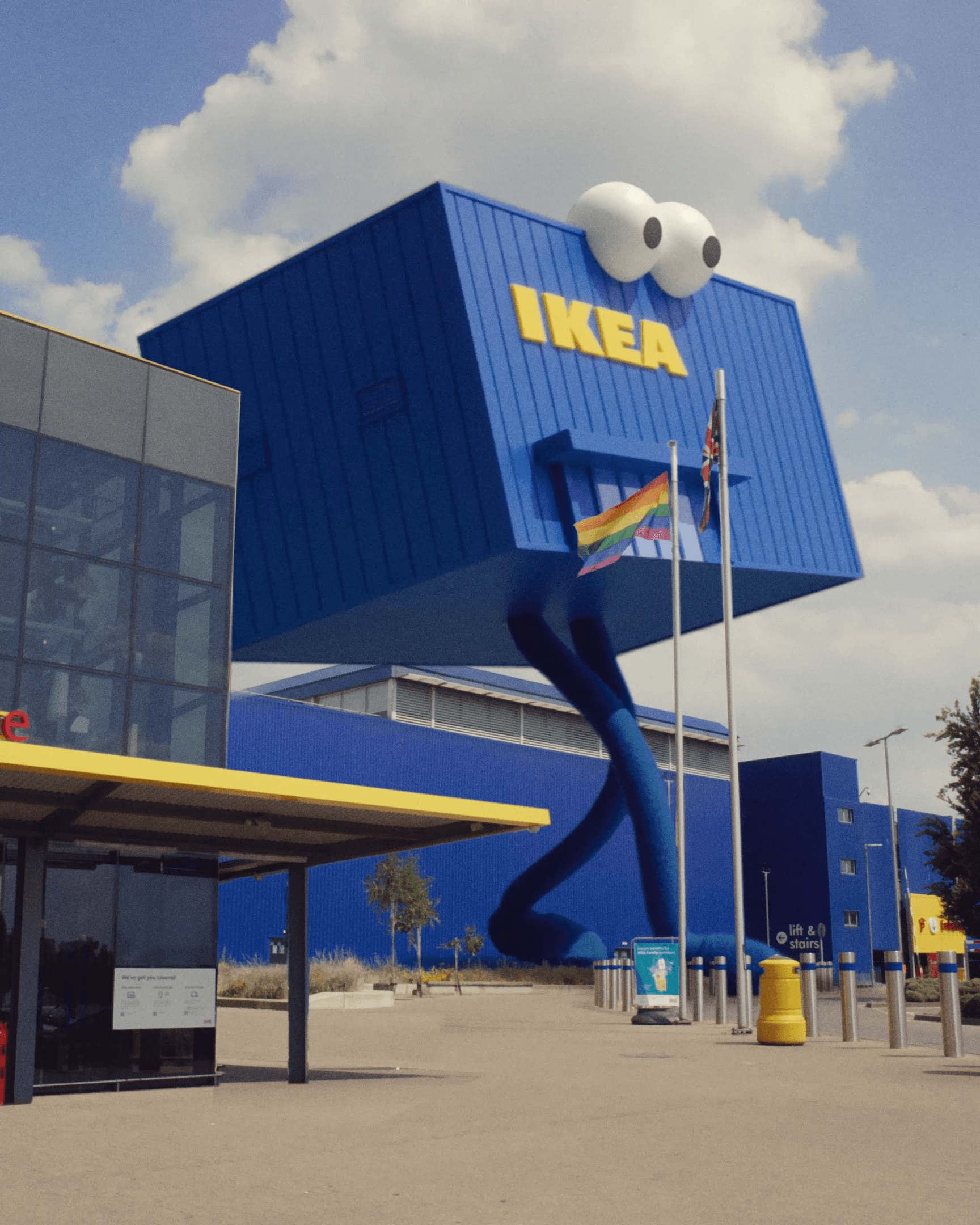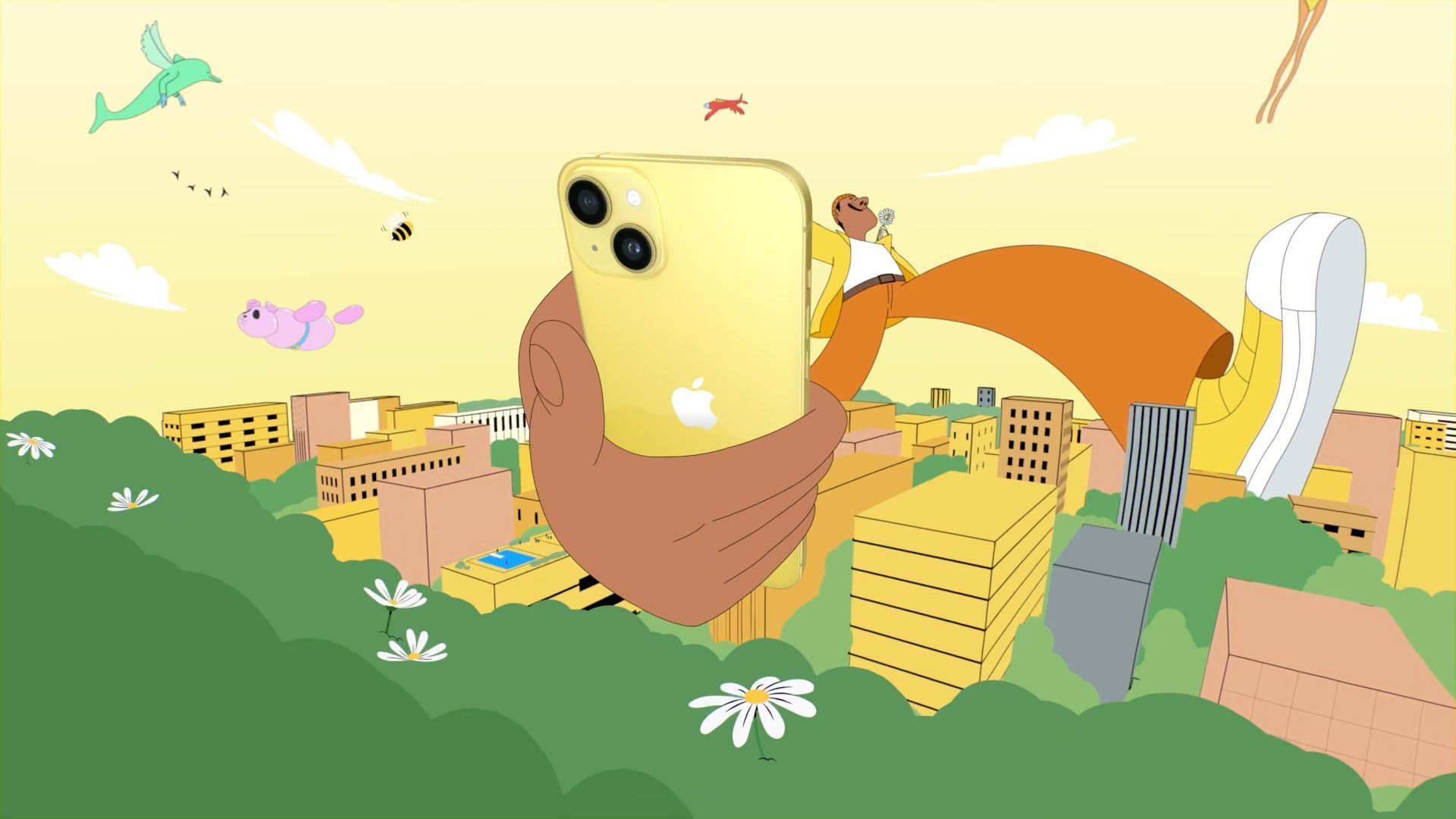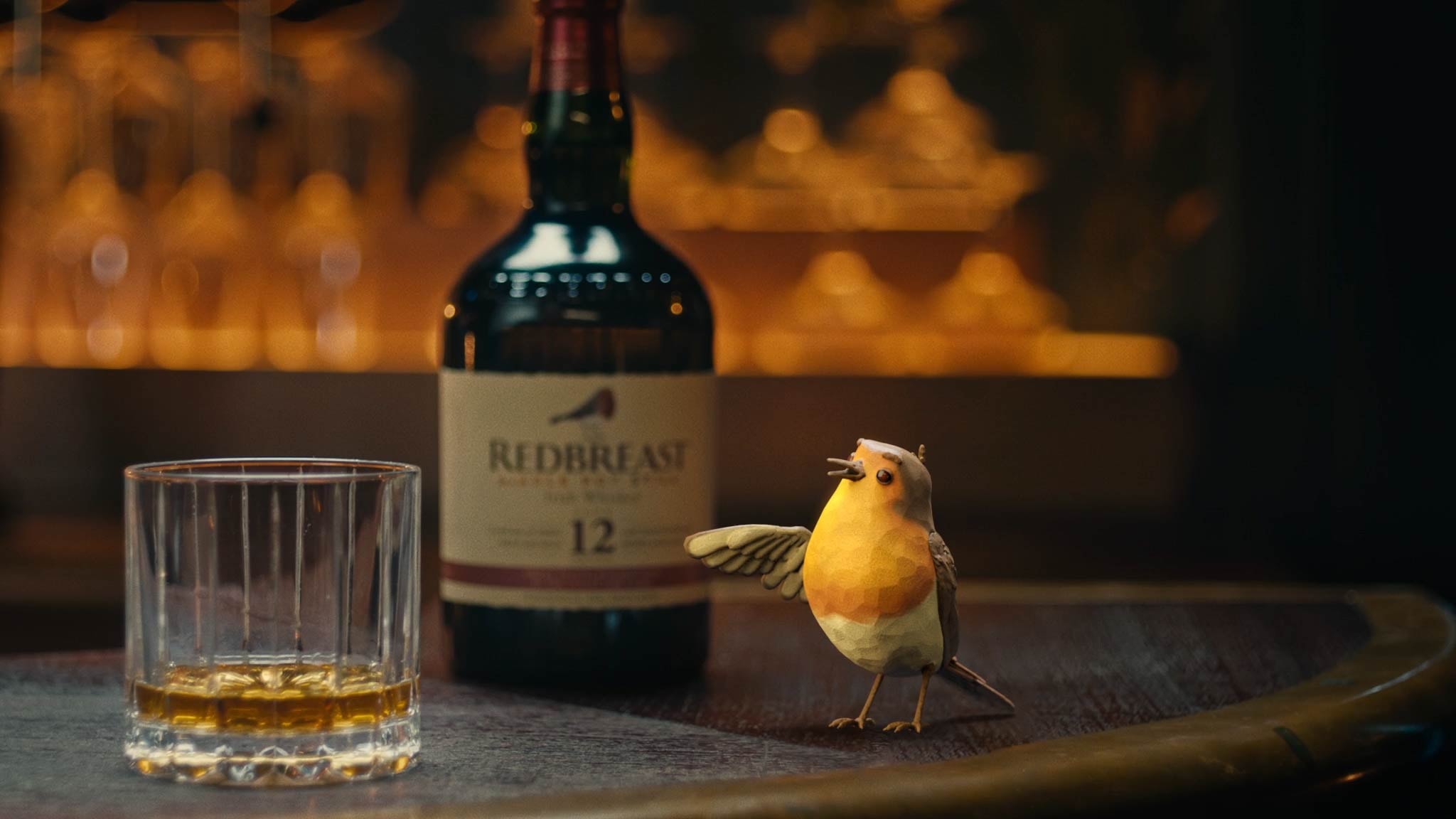

Jelly Presents: Dan Woodger
Dan grew up watching The Simpsons and daydreaming about making a living from doing what he loves – drawing and animating. His client list now proves that’s possible, with the likes of Google, Pepsi, The New York Times, and Netflix as collaborators. Projects with McDonald's and Samsung have seen him travel the globe to Japan and Taiwan respectively - and his work has been commissioned by Will Smith and featured alongside Snoop Dogg. Having developed a recognisable illustration style and a lovable cast of colourful characters, Dan has moved into animation direction, nodding in technique and style to the classic retro feel of his work.
You’re big into characters and bold colours - What influences your recognisable style, and how has it changed over time?
I love working with characters, it's like working in a universal language. It’s all about expression and body language.
In terms of style, my big influences were the cartoons I grew up with: All the '90s Nicktoons (Rugrats, Doug, Hey Arnold) plus I was a big fan of the ‘Where’s Wally’ books as you might imagine, so they were a big influence on me. But my number one influence was The Simpsons, I basically learnt to draw from Matt Groening.
Those early influences really shaped the foundation of my style, and then over time I’ve evolved, refined, experimented and eventually created a unique visual language that feels authentic and true to who I am. And that style is forever being gently tweaked and experimented with over time, just as we evolve and change in life.
A big part of how you’ve evolved is expanding your practice into hiring an assistant and really bedding into the collaborative team experience of directing. How have you found that and is it something you’ve always wanted to do?
In 2021 I took on a really huge project for Two Dots which required an eye watering amount of work and coincidentally Adam (my assistant artworker) had just posted out an ad on Instagram looking for assisting work so we synched up and started working together 2 days a week. It made SUCH a HUGE difference to work flow, organisation and, importantly, bought me precious time to focus on some of the more ’macro’ aspects of my practice whilst Adam could focus his attention on the nitty gritty time consuming things.
In regards to this being something I’ve always wanted to do - actually no, I never foresaw making collaboration a part of my practice. I think I set out with the idea that I was always just going to do this illustration thing on my own. However, I’ve done a complete 180 on that point of view, and now think collaboration is the most exciting and necessary part of this job.
In fact I can pinpoint the exact moment my outlook on this changed. A few years ago, before taking on Adam for this big job for Two Dots, I had an intern named Katie helping me with some miscellaneous tasks. One day I was relaying instructions and asked her to do something a specific way, in turn she offered an alternative solution - for some reason I just shut it down without consideration. She then said wryly ‘oh you’re so stubborn’ and it was genuinely a cloud parting type moment and I realised that the years of working in such an isolated way had begun to calcify my approach to work and it was a great wake up call. Since that day I’ve made it a concerted effort to be open to and interested in new ideas and try to welcome collaboration with open arms. Closed mindedness is a one way ticket to Boomerville.

You have worked with some huge brands including Google, Pepsi, The New York Times, Netflix, McDonalds and even Will Smith - what do you think is key to a successful commercial collaboration?
I think approaching the project with a level of mutual respect is a good start. Recognising that whilst the project is creative on the surface. It's really trying to remember it’s a business transaction at its core. Big brands have an image they want to cultivate and working with fun contemporary artists is a way to promote an image of playfulness. From my point of view, the big brands command a huge amount of attention and provide a great shop window for my artwork. So if we can find a way to satisfy both of those ambitions through a work collaboration it’s win win.
You collaborated with Kiehl's on their 618 Summer campaign, what was unique about this collaboration? And how does it contribute to the evolution of your style?
That was a super fun project - I’ve wanted to work with Kiehl's forever. I don’t think it was a conscious decision but I agree this definitely felt like a project that helped further evolve my style. It’s quite interesting. I used to think there were certain rules I needed to employ in order for the work to be recognised as ‘mine’ - certain colours or style of eyes, but I’m going through a bit of a minimalism phase at the moment, and it’s been fun for me to see how much detail I can keep stripping back whilst asserting ownership on the outcome. It feels like more than I would have thought possible, and that's quite exciting.
Last year the branding project for The Mean Tomato with Kuba & Friends and Alec Tear won 3 pencils at D&AD - can you tell us a bit about your role in the project, and why you think it was so successful?
Alec is a genius, the most detail oriented person I've ever met and it was such a joy to work together.
My role was to design the Mean Tomato character and I’m not sure I can really explain its success. I think it just had a fresh feel. The whole look and aesthetic designed by Alec and Kuba & Friends was just so unique and original. I think that made my part super easy - I just rocked up and did my thing.
What are the challenges that come with designing a new brand mascot or working with an already established one?
It definitely requires a great deal of thought. Mean Tomato was an excellent opportunity to create something new playing on existing category mascots and branding. More recently I’ve been working with global clients re-imagining either their internally established corporate mascots or well-loved character mascots with lots of brand heritage. You have to think of the character in several dimensions/angles and consider how they might be used. Sometimes you need to bring personality into it, or consider the target demographic which might mean ageing the character up or down. You need to establish some rules or even create a style guide. I love the process, it’s such a fun challenge.
What are some of the things you have learned about yourself and about your craft over the years?
Having a baby was a big change. I was initially slightly concerned how I would be able to manage my workaholism alongside family commitments but I’ve actually found it to be such a welcome change to the work life balance. Having less time available at my desk almost makes it more pleasurable, and taking more time away leaves me feeling more inspired. Plus the pure magic of toddlerdom is a joy to experience tangentially, it’s like getting a tiny glimpse into the mind of a little human working out how the world works and it is so inspiring and pure. I honestly feel more inspired and excited by making things than I ever have.
Your style appeals to lots of different markets, why do you think that is and how have you found working in different countries?
I’m genuinely not sure why it appeals haha. I try not to question it tooooo much... but I’m very grateful.
I really like working in different areas of the world as it feels like you’re stepping into the unknown a little bit, you’re not quite sure of the rules and you always learn new things. So I try to document these projects almost like little adventure stories.
You begin with the initial enquiry/brief which is kind of like the introduction/prelude, then comes the hard work to deliver on the brief - that tends to be the more emotionally hefty middle part. Then comes the launch/ending, which is the celebration/conclusion to the adventure.
However, I’ve learned that sometimes, especially when these projects are launching so far away from home, you need to take that ending into your own hands a little bit. Especially when working with design teams in different regions in different time zones. Quite often as artists we’re a bit further down the food chain and can get left out of discussions and by the time of launch the teams have moved onto something else that’s now commanding their attention.
So when a particularly interesting project comes along, I've learned to invest some of the earnings from that project back into delivering a good ending to the story. That might be travelling to the country where the work has gone live to document it. Or creating a 'making of' film or building a 3D mock up... just something that helps wrap the story up in a neat bow. I think it's important, especially when these things launch halfway across the world. It makes it feel more real and creatively satisfying and puts a nice big full stop on the end.
How important do you think it is to create self-initiated work?
I really had to think about this question, because my instinct is to say of course. However I really can’t say I’ve done much self initiated work recently. But I do take the time to reinvest back into my practice, whether that's learning new bits of software, travelling to document a project, creating extra animations to help showcase a project I’m always trying to think of ways I can go the extra mile to make the work look as good as possible… which I guess sort of comes under the definition of ’self-initiated’. A bit.
Lastly, what’s your favourite cartoon?
The Simpson Seasons 1-10
Below: Dan with Eri at Jelly NY on his recent trip to New York.
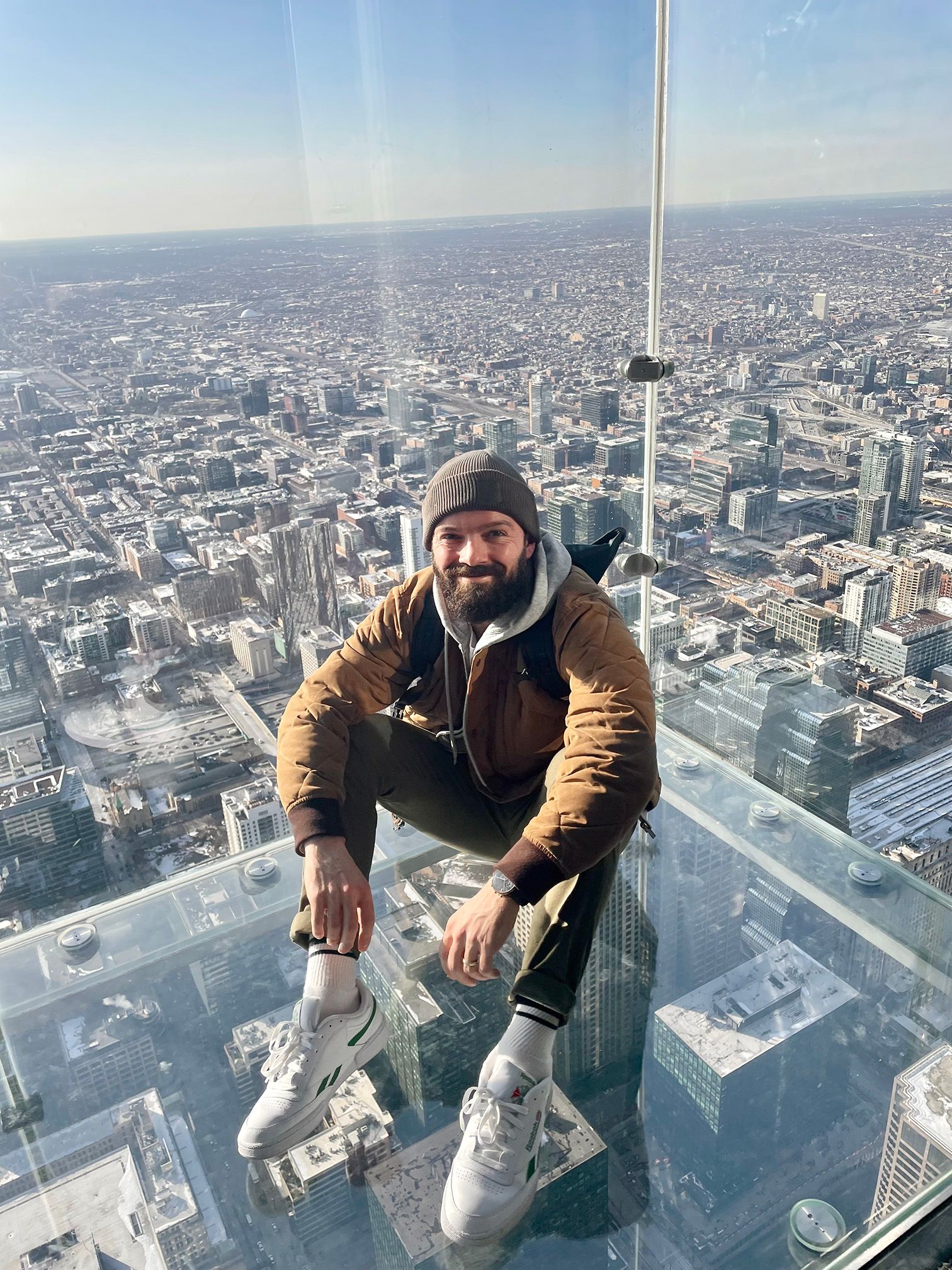
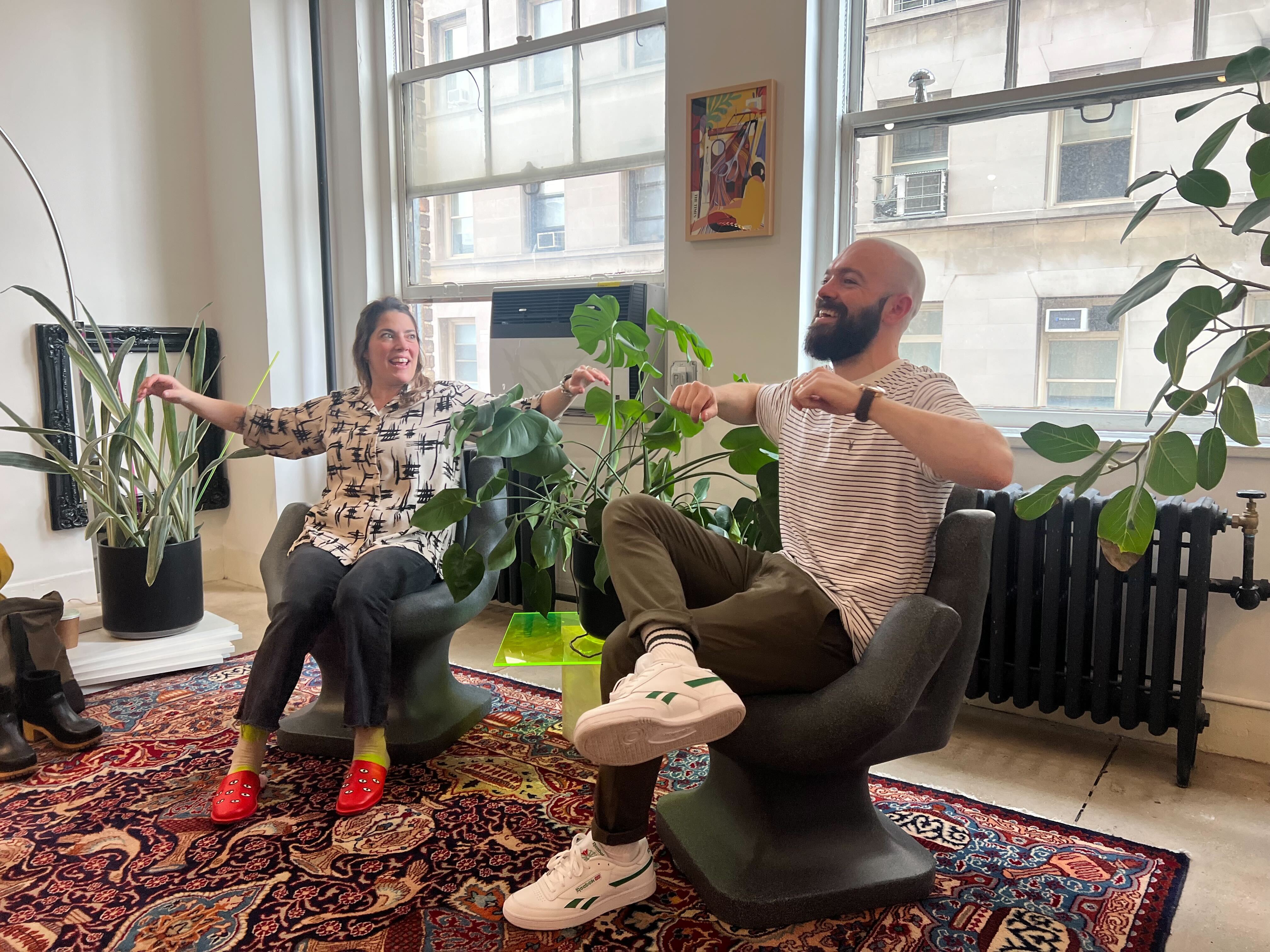
What We Do
We specialise in bold visual content and brand storytelling.
